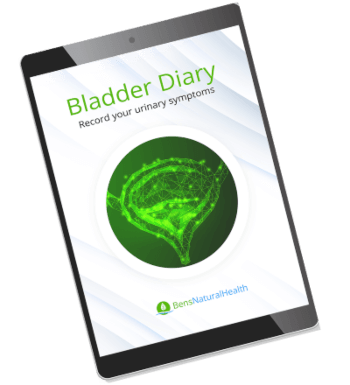Rectal prolapse occurs when the rectum, a section of the large intestine, descends into the anus due to weakened supporting muscles. While it may resemble or be mistaken for hemorrhoids, rectal prolapse doesn’t resolve spontaneously.
Surgical intervention becomes necessary to address and correct this condition. Your rectum is the last portion of your large intestine – the last 20 cm or so before your anus. It serves as a temporary holding region for bowel movements, and it is where stool prepares to exit your body.
When feces enter your rectum, it stimulates the desire to defecate, and a network of muscles pulls the defecate out through your anus.
Below we explore the symptoms of rectal prolapse and what causes it. We will also talk about diagnosing and treating anal prolapse and its potential complications.
Symptoms Of A Rectal Prolapse
The symptoms of rectal prolapse vary according to the degree of the condition. Typically a reddish lump or mass emerges from the anal opening while straining during a bowel movement. This mass may disappear by itself into the anus or remain visible outside the anal canal.
Other symptoms include:
- Deep pain and discomfort in the lower abdomen
- Constipation, or the sensation that the rectum is never empty after passing a motion
- Mucus and blood from the anus
- Having trouble passing a bowel movement
- Leakage of liquid feces, especially after a bowel movement
- The need to use large amounts of toilet paper to clean up afterward
- Fecal incontinence
Get your FREE bladder diary
- Daily bladder diary
- Better understand your urinary symptoms
- Step-by-step guide
What Causes A Prolapsed Anus?
Rectal prolapse occurs due to the failure of the muscles that hold the rectum in place. Many factors could have a role in this.
Some possible causes of rectal prolapse include:
- Aging
- Previous injury or surgery to your pelvis
- Pregnancy and childbirth
- Intestinal parasite infections
- Chronic constipation or diarrhea
- Spinal cord or nerve damage
- Chronic coughing or sneezing
- Cystic fibrosis
How Is A Prolapsed Rectum Diagnosed?
During the initial visit, your surgeon will take a detailed medical history and inspect your rectum. They may use one or more of the following tests to confirm the diagnosis or rule out other potential problems:
Digital Rectal Exam
A digital rectal exam (DRE) is a physical examination performed with lubricated, gloved fingers. The surgeon will examine the anorectal area.
While the doctor palpates the anal canal, you may be asked to relax and squeeze the anal sphincter muscles. This gives the doctor an idea of how well the anal sphincter is working.
If the prolapse is not evident, you may be asked to sit on a toilet and strain as if having a bowel movement. In some circumstances, anal prolapse can be “hidden” or internal, making diagnosis more challenging. Your doctor may order additional diagnostic tests such as:
Defecography
Here, you will be given an enema to simulate a bowel movement, and then photographs are taken with an X-ray or MRI scanner.
This depicts the movement of the pelvic organs and muscles during a bowel movement. Defecography may also reveal other pelvic floor issues. When determining the best course of treatment, a urogynecologist (a specialist in the urinary and reproductive organs) will consider these factors.
Fixing rectal protrusion can sometimes exacerbate other pelvic floor issues if they are not addressed concurrently.
Anorectal Manometry
A tiny probe is placed into the rectum to test and assess pelvic, rectum, and anal muscle functioning and reflexes used during bowel movements.
Colonic Transit Study (“Sitzmark” Test)
Patients with rectal prolapse who have been constipated for a long time may be advised to do a transit study to assess their colon’s ability to expel feces. This involves ingesting a capsule containing many markers visible on an abdomen X-ray.
Several X-rays are then obtained over five days to determine how the markers migrate through the small intestine and colon, known as “transit time.” Patients with particularly long transit times may benefit from having some or, less often, all of their colon removed during rectal prolapse repair.
Colonoscopy
Colonoscopy is a process in which a long, flexible, tubular colonoscope is used to examine the whole inner lining of the large intestine.
This is frequently recommended to rule out any related polyps or malignancy before anal prolapse treatment.
Electromyography (EMG)
This test evaluates whether nerve injury is causing the anal sphincters to malfunction. It also looks at muscle coordination.
Barium enema
X-ray images are taken after a contrast solution is inserted in the rectum.

What Are The Treatments To Fix Rectal Prolapse?
Rectal prolapse can be surgically repaired using a variety of techniques. The treatment for anal prolapse can generally be through the abdomen or from the perineal side.
There are two options – either remove the portion of the rectum that has prolapsed or draw the rectum back up and anchor it. Mesh is sometimes used to strengthen the rectum.
The best treatment is determined by the prolapse’s size and the patient’s overall health. If the patient is medically fit for surgery, an abdominal approach is the best chance for long-term effective correction of rectal prolapse.
Abdominal Approach (Rectopexy)
Rectopexy for rectal prolapse returns your rectum to its original position in your pelvis by approaching the rectum through an incision in the abdominal wall.
Permanent stitches will be used to secure your rectum to the rear wall of your pelvis.
Alternatively, a mesh may be used to reinforce it. This will keep your rectum in place long enough for scar tissue to form. The rectal prolapse surgery has a high success rate of 97%.
Rectal Approach (Perineal)
If abdominal surgery is not an option, your surgeon may treat rectal prolapse through your perineum and rectum.
Rectal surgery, unlike abdominal surgery, does not usually require general anesthesia. If you have a relatively small prolapse or your rectum is trapped on the outside, the rectal or “perineal” method for prolapsed rectum surgery may be preferable.
There are two standard procedures:
Altemeier procedure
Your surgeon will pull the prolapsed rectum out via your anus and remove it during this procedure. If the bottom part of the colon, i.e., the sigmoid colon, is also involved in the prolapse, they may remove it as well. Then the two ends of the large intestine are sutured together, forming a rectum from the end of your colon.
Delorme procedure
A less invasive surgery, such as the Delorme procedure, is an alternative approach for a mucosal prolapse or a mild external prolapse.
The Delorme technique removes the prolapsed mucosal lining of the rectum. The rectum muscle wall is then folded back on itself and stitched together inside your anal canal. The resulting double muscular wall strengthens the rectum.

Potential Complications Of Rectal Prolapse Surgery
As with all procedures, rectal prolapse surgery does have some risks and may result in complications. The table below shows potential minor and major complications and additional risks of anal prolapse surgery.
| Minor or major complications | Additional risks |
| Bleeding | Anastomotic leak |
| Infection | Sexual dysfunction |
| Blood clots | Constipation |
| Injury to nearby organs | |
| Anesthesia complications |
Rectal Prolapse Self-Care Tips
Drink plenty of water and consume plenty of fruits, vegetables, and other fiber-rich meals.
By consuming at least 5 servings of fruits and vegetables each day, constipation and straining can be reduced or avoided.
Dietary changes are frequently sufficient to improve or reverse a partial prolapse.
If you are constipated, consult your doctor about taking a stool softener or a bulk laxative.
Maintain an active lifestyle and receive frequent exercise. If you are overweight, try to lose weight.
How Can You Prevent Rectal Prolapse?
There is no guaranteed way to prevent rectal prolapse, but certain measures may help reduce the risk:
- Healthy Diet: Eating fiber-rich foods can prevent constipation and straining during bowel movements.
- Hydration: Drinking enough water can soften stools and make them easier to pass.
- Regular Exercise: Maintaining overall muscle strength can support the rectum and lower the risk.
- Proper Toilet Habits: Avoid straining and respond promptly to the urge for a bowel movement.
- Manage Chronic Coughing: Treating persistent coughing can reduce abdominal pressure.
- Lift Safely: Use proper techniques when lifting heavy objects to avoid excess strain.
- Healthy Weight: Maintaining a healthy weight can lessen pressure on the pelvic area.
- Pelvic Floor Exercises: Strengthening pelvic muscles may provide support.
- Treat Constipation: Address chronic constipation to minimize straining.
FAQs
What does rectal prolapse feel like?
Rectal prolapse feels like something is stuck within your anus after you defecate. It could also feel like pressure or a protrusion in your anus. Some people report that it feels like something is coming out of their anus.
What does rectal prolapse look like?
Rectal prolapse appears as a red, meaty bulge protruding from your anus. In addition, your anus may leak stool, mucus, or blood.
Is rectal prolapse serious?
While prolapse may seem scary, it is usually not considered a medical emergency. The longer you have the illness, the worse it can develop. Living with rectal prolapse can be embarrassing and impact your quality of life.
What is the average age for rectal prolapse?
Rectal prolapse primarily affects adults. Women over 50 are six times more likely than men to have it.
While few men suffer prolapse, those who do are substantially younger, with an average age of 40 years or less.
What happens if you ignore rectal prolapse?
Untreated rectal prolapse increases the risk of rectum injury, such as ulceration and bleeding.
Sometimes the rectum is strangulated (the blood supply is cut off), resulting in death and rotting of the rectum portion.
Is rectal prolapse cancerous?
Rectal cancer may present as rectal prolapse. However, the chances of developing rectal cancer due to prolapse are rare.
How to tell if you have rectal prolapse vs hemorrhoids?
Rectal prolapse and hemorrhoids might have similar symptoms, and it’s possible to confuse the two.
Hemorrhoids, or enlarged blood vessels in the anus or rectum, can cause itching, irritation, bleeding, and even prolapse, and they might resemble mucosal rectal prolapse.
They are also temporary and will resolve themselves within a week or so, whereas rectal prolapse is chronic and progressive.
Conclusion
Rectal prolapse is a medical condition that involves the protrusion of the rectum through the anus.
While there is no foolproof method to completely prevent rectal prolapse, adopting a combination of healthy lifestyle practices can certainly mitigate the risk.
Maintaining a well-balanced diet rich in fiber, staying adequately hydrated, and engaging in regular physical activity are essential steps to promote healthy bowel function and minimize the likelihood of constipation and straining.
Additionally, practicing proper toilet habits, managing chronic coughing, lifting objects safely, maintaining a healthy weight, and performing pelvic floor exercises can all contribute to the overall well-being of the pelvic area and potentially reduce the chances of rectal prolapse.
Explore More








